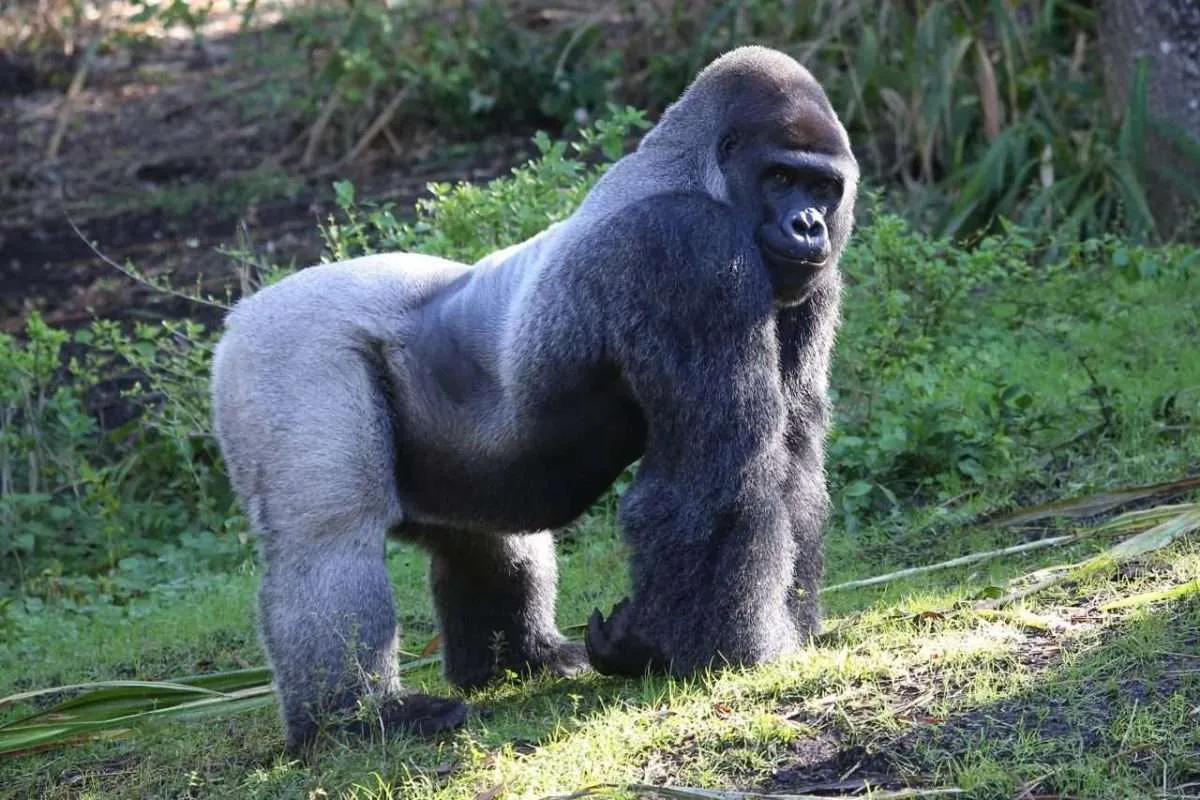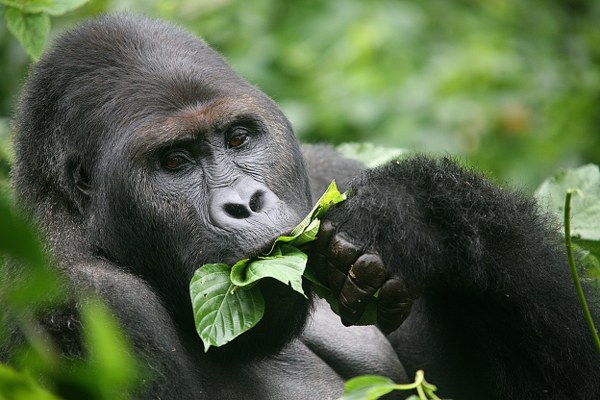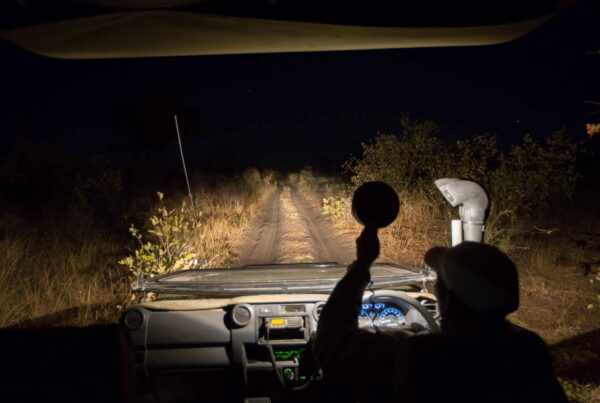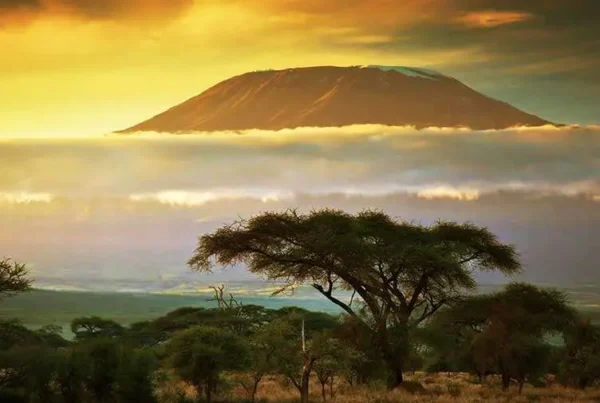Eastern Lowland Gorilla: Guardians of the Congo Basin
The Untamed Majesty of the Forest
In the heart of Central Africa, where the dense rainforest blankets the landscape with an almost mystical aura, a creature of profound significance dwells, commanding both admiration and awe. The Eastern Lowland Gorilla (Gorilla beringei graueri), the largest of all gorilla subspecies, inhabits this remote region, embodying the resilience and vulnerability of nature itself. This magnificent primate, often referred to as Grauer’s gorilla, is a symbol of biodiversity, a living testament to the complex interplay between wildlife and the ecosystems they inhabit.
Despite the gorilla’s immense size and strength, an unmistakable vulnerability is observed in its dwindling population, largely influenced by human activity, habitat destruction, and political instability in the region. The forest, dense and seemingly impenetrable, shelters these creatures, yet it cannot shield them from the consequences of human encroachment. The story of the Eastern Lowland Gorilla is therefore not merely a tale of an extraordinary species but also a reflection of the urgent need for conservation, awareness, and responsible engagement with Africa’s natural heritage.
Taxonomy and Physical Characteristics
The Eastern Lowland Gorilla is classified scientifically as a subspecies of the Eastern Gorilla. Its taxonomy positions it under the genus Gorilla, which is divided into two main species: the Western Gorilla (Gorilla gorilla) and the Eastern Gorilla (Gorilla beringei). Within the Eastern species, two subspecies are recognized: the Mountain Gorilla (Gorilla beringei beringei) and the Eastern Lowland Gorilla (Gorilla beringei graueri).
Physical characteristics of this gorilla subspecies are remarkable for their sheer size and robust build. Adult males, also known as silverbacks due to the distinct silver hair that adorns their backs with age, can weigh up to 220 kilograms and stand over 1.8 meters tall when upright. Females, although smaller, exhibit a strength and endurance that enable them to navigate the forest with agility. The gorilla’s muscular frame is complemented by a broad chest, long arms suited for knuckle-walking, and a prominent sagittal crest that supports powerful jaw muscles necessary for consuming a diet dominated by fibrous vegetation.
The facial features, marked by expressive eyes and a pronounced brow ridge, reflect an intelligence and emotional depth that has captivated primatologists and nature enthusiasts alike. The Eastern Lowland Gorilla’s hair is typically dark brown or black, slightly lighter than its mountain counterpart, allowing for subtle camouflage within the undergrowth of the forest.
Habitat and Geographic Distribution
The habitat of the Eastern Lowland Gorilla is restricted almost exclusively to the Democratic Republic of Congo (DRC), particularly within the eastern lowland rainforests. This region, encompassing areas such as Kahuzi-Biéga National Park, Maiko National Park, and the surrounding unprotected forests, is characterized by dense tropical rainforest interspersed with swamps, bamboo zones, and occasional open clearings. The complex vegetation provides both sustenance and shelter, ensuring the gorillas’ survival despite numerous environmental pressures.
The elevation of their habitat varies considerably, from lowland plains to mountainous terrains, although the species is most commonly observed between 600 and 1,200 meters above sea level. The rainforest’s microclimate, with high humidity and frequent rainfall, creates a nutrient-rich environment, sustaining the diverse flora that forms the gorilla’s diet. This habitat, however, is under constant threat from logging, mining, and human settlement, resulting in fragmented populations and increasing isolation among gorilla groups.
Social Structure and Behavior
The social structure of the Eastern Lowland Gorilla is organized, intricate, and highly adaptive. Typically, the species lives in groups known as troops or bands, which are usually led by a dominant silverback. This leader, a mature male, exercises authority, protects the group from threats, and mediates conflicts within the troop. A typical troop consists of several adult females, their offspring, and occasionally subordinate males.
Behavioral studies have revealed that the Eastern Lowland Gorilla exhibits a range of social behaviors, from grooming and play to the use of vocalizations and gestures to communicate. Grooming, in particular, is a fundamental social activity that strengthens bonds between individuals and reduces tension. Play behavior among juveniles serves not only as recreation but also as a critical component of learning, enabling younger gorillas to develop motor skills, social strategies, and cognitive abilities essential for adulthood.
Feeding behavior is dominated by foraging for leaves, stems, fruits, seeds, and occasionally small invertebrates. Unlike their mountain counterparts, Eastern Lowland Gorillas are more likely to consume a wider variety of plant material, reflecting the diverse plant species present in their lowland habitats. Nest-building is another fascinating aspect of their behavior, with each gorilla constructing a sleeping nest daily, either on the ground or in trees, demonstrating ingenuity and adaptability.
Reproduction and Life Cycle
Reproductive behavior in Eastern Lowland Gorillas is carefully orchestrated within the social hierarchy. Females typically reach sexual maturity between 8 to 10 years of age, while males mature later, often taking 12 years or more to attain full physical and social maturity. Mating is usually monopolized by the dominant silverback, who guards females against competing males.
The gestation period for the Eastern Lowland Gorilla is approximately 8.5 months, culminating in the birth of a single infant. Twin births are rare and carry significant survival challenges. Infants are dependent on maternal care for the first few years of life, with nursing gradually complemented by solid food. The bond between mother and offspring is profoundly strong, ensuring that young gorillas receive guidance, protection, and emotional security essential for survival within the troop.
Lifespan in the wild is estimated to be around 30 to 40 years, although environmental pressures, poaching, and disease significantly reduce the average life expectancy in certain areas. The developmental trajectory of gorillas, from infant to silverback, is shaped by social learning, environmental challenges, and the resilience instilled by familial and troop dynamics.
Communication and Intelligence
The intelligence of the Eastern Lowland Gorilla is evidenced through its sophisticated communication methods and problem-solving abilities. Vocalizations are diverse, ranging from grunts and hoots to chest beats and roars, each serving a distinct purpose such as alerting the troop to danger, asserting dominance, or expressing contentment. Non-verbal communication, including facial expressions, postures, and gestures, enhances group cohesion and social interaction.
Tool use, although less frequently observed than in some primate species, has been documented. Gorillas may manipulate branches to test water depth, strip leaves for bedding, or engage in other problem-solving behaviors that reflect both innovation and adaptability. Observations suggest that Eastern Lowland Gorillas possess memory, empathy, and a capacity for learning that rivals many other mammals, reinforcing their status as highly sentient beings within the animal kingdom.
Conservation Status and Threats
The Eastern Lowland Gorilla is classified as Critically Endangered by the International Union for Conservation of Nature (IUCN). Population estimates indicate that fewer than 5,000 individuals remain in the wild, with numbers continuing to decline due to a combination of anthropogenic and environmental threats. Poaching remains one of the most pressing dangers, driven by the bushmeat trade and illegal wildlife trafficking.
Habitat destruction, particularly from logging, mining, and agricultural expansion, fragments the forest and isolates gorilla populations, reducing genetic diversity and increasing vulnerability to disease. Political instability in the Democratic Republic of Congo exacerbates these threats, hindering conservation efforts and limiting access to remote areas where gorillas reside. Infectious diseases, including respiratory infections transmitted from humans, pose additional risks, highlighting the delicate balance between human presence and wildlife preservation.
Conservation initiatives have been implemented to safeguard the Eastern Lowland Gorilla, with national parks such as Kahuzi-Biéga serving as strongholds. Anti-poaching patrols, habitat restoration projects, and community engagement programs have demonstrated measurable success, yet sustained international support and awareness remain critical. Ecotourism, when managed responsibly, has emerged as a vital tool for conservation, providing funding, education, and incentives to protect these remarkable creatures.
Ecological Significance
The ecological role of the Eastern Lowland Gorilla extends far beyond its immediate survival. As a keystone species, these gorillas influence forest composition and regeneration. Through their feeding habits, they disperse seeds across vast areas, contributing to plant diversity and the maintenance of healthy ecosystems. Fallen fruits and partially eaten vegetation create microhabitats for insects and small animals, facilitating complex ecological interactions.
By maintaining forest structure and promoting biodiversity, the Eastern Lowland Gorilla indirectly supports countless other species, from birds and reptiles to amphibians and mammals. Their presence is an indicator of forest health, reflecting the integrity of one of the world’s most vital and endangered ecosystems. Protecting these gorillas, therefore, ensures the preservation of a broader ecological network upon which both wildlife and human communities ultimately depend.
Human Interaction and Cultural Significance
Throughout history, local communities have shared a complex relationship with the Eastern Lowland Gorilla. Revered in some cultures as spiritual symbols and totemic creatures, they have also been viewed as a source of sustenance, leading to conflicts over land and resources. Traditional knowledge about gorilla behavior and habitat has been invaluable to conservationists, providing insights that complement scientific research.
The rise of ecotourism has reshaped human interaction with gorillas, offering economic benefits while fostering appreciation for wildlife. Carefully regulated gorilla trekking allows visitors to witness these magnificent animals in their natural habitat, promoting conservation awareness and generating funds for local communities. By integrating cultural respect, environmental stewardship, and sustainable tourism, human engagement with the Eastern Lowland Gorilla can become a force for positive change rather than exploitation.
The Future of the Eastern Lowland Gorilla
The fate of the Eastern Lowland Gorilla hangs in a delicate balance, determined by conservation efforts, political stability, and global awareness. Protecting this species requires a multi-faceted approach, encompassing habitat preservation, anti-poaching enforcement, disease prevention, and community involvement. Scientific research continues to uncover new aspects of gorilla behavior, genetics, and ecology, informing strategies that enhance survival prospects.
Collaborative efforts between governments, non-governmental organizations, local communities, and international stakeholders have yielded promising results, yet vigilance is necessary to sustain progress. The species’ critical status serves as a reminder that urgent action is needed to prevent further decline and ensure that future generations may experience the awe-inspiring presence of the Eastern Lowland Gorilla in its natural habitat.
Experiencing the Eastern Lowland Gorilla
For travelers and wildlife enthusiasts, the opportunity to observe Eastern Lowland Gorillas offers a transformative experience. Guided tours into protected areas provide a glimpse into the intricate social lives, behaviors, and environments of these primates. The sight of a silverback leading a troop, the playfulness of juveniles, and the gentle interactions between family members leave an indelible impression, inspiring respect and a commitment to conservation.
Responsible tourism practices are emphasized, with strict regulations on proximity, group size, and interaction to minimize stress and disease transmission. Such experiences not only deepen appreciation for wildlife but also generate vital support for ongoing protection initiatives. By witnessing the Eastern Lowland Gorilla in its natural environment, visitors become advocates for a species that embodies the wild majesty of Africa’s forests.
Conclusion
The Eastern Lowland Gorilla stands as a symbol of strength, intelligence, and vulnerability. Its existence is intertwined with the fate of the forests it inhabits, reflecting the broader challenges of conservation in an era of human expansion and environmental change. Protecting these primates demands continued dedication, global awareness, and sustainable engagement with both nature and local communities.
For those seeking to experience the extraordinary life of the Eastern Lowland Gorilla firsthand, engaging with responsible African tours and safaris provides an unparalleled opportunity. By choosing reputable providers such as WildHorn Africa, travelers not only witness the awe-inspiring presence of these magnificent creatures but also contribute meaningfully to their conservation. An unforgettable journey into the heart of the Congo Basin awaits, where every encounter with the Eastern Lowland Gorilla becomes a powerful reminder of the beauty, complexity, and fragility of the natural world.





 WildHorn Africa – Authentic and unforgettable tours across Africa, guided by local experts who know the land, wildlife, and culture best.
WildHorn Africa – Authentic and unforgettable tours across Africa, guided by local experts who know the land, wildlife, and culture best.


